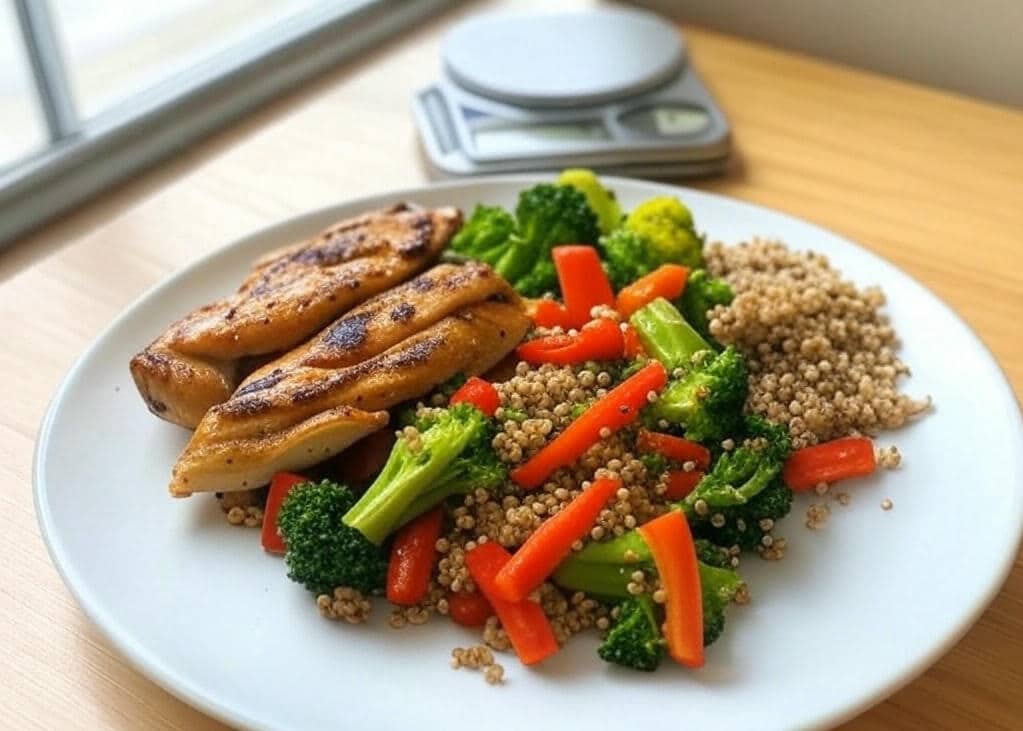The Ultimate Meal Planning Process for Fat Loss: A Step-by-Step Guide

Looking to maximize fat loss results without the guesswork? Meal planning is a proven strategy to stay on track with fitness goals, and this guide breaks down an exact process to create meals tailored for fat loss. Optimized with calorie control, protein distribution, and nutrient balance, this method is designed to simplify nutrition while delivering results. Whether new to meal prep or refining an existing routine, these steps offer a clear path to success.
Table of Contents
Step 1: Calculate Calories and Protein Needs
The foundation of effective meal planning starts with knowing two key numbers: daily calorie intake and protein requirements. These figures are critical for fat loss, as they ensure the body burns fat while preserving muscle. Not sure how to calculate these? Here is a calculator.
Also, look out for a dedicated video tutorial that explains the process in detail—coming soon.
Step 2: Map Out the Dietary Pattern
Once calorie and protein targets are set, grab a sheet of paper and sketch out a daily eating schedule. Will it include breakfast, lunch, and dinner? Are snacks part of the plan, or will some meals be skipped? This step creates the framework for the day. For example, a typical pattern might look like three meals plus a snack, but it’s flexible—adjust it to fit lifestyle and preferences.
Step 3: Divide Calories and Protein Across Meals
With the eating schedule in place, allocate calories and protein to each meal. For instance, a 1,650-calorie day could break down as 500 calories for breakfast, 500 for lunch, 500 for dinner, and 150 for a snack. Prefer a lighter breakfast? Shift those calories to lunch or dinner for larger portions. Next, distribute protein evenly—or slightly more to bigger meals—to support muscle maintenance and satiety. This balance keeps energy steady and cravings in check.
Step 4: Prioritize Protein in Meal Design
Now it’s time to build the meals, starting with protein. Why protein first? It’s the cornerstone of fat loss, helping repair muscles and keep hunger at bay. Choose lean sources like chicken, turkey, fish, eggs, or plant-based options like tofu. Calculate how much of each protein food is needed to hit the assigned protein target for that meal. For example, if breakfast calls for 30 grams of protein, 4 ounces of chicken breast might do the trick.
Step 5: Fill in the Rest with Nutrient-Dense Foods
After locking in protein, check how many calories it accounts for within the meal’s limit. With the remaining calories, add fruits, vegetables, and whole grains. These foods bring fiber, vitamins, and sustained energy to the plate. For a 500-calorie breakfast, if 4 ounces of chicken uses 120 calories, there’s 380 left for oatmeal, berries, or a side of spinach. This approach ensures meals are balanced and satisfying.
Why This Meal Planning Method Works
Following this process offers more than just fat loss—it builds a deeper understanding of food composition. By prioritizing protein, controlling calories, and rounding out meals with wholesome ingredients, each dish aligns with fitness goals. Over time, this method becomes second nature, making meal prep intuitive and effective. Plus, it’s customizable—swap foods or tweak portions to keep things fresh.
Tips for Success
- Start Simple: Use familiar foods to ease into the process.
- Track Progress: Log meals in an app to fine-tune calorie and protein accuracy.
- Prep Ahead: Batch-cook proteins or chop veggies to save time.
Ready to Transform Nutrition?
This meal planning process is a game-changer for anyone serious about fat loss. It takes the complexity out of dieting and replaces it with a clear, actionable system. Try it for a week, and watch how small steps lead to big results. For more fitness and nutrition tips, check out the Youtube video.
